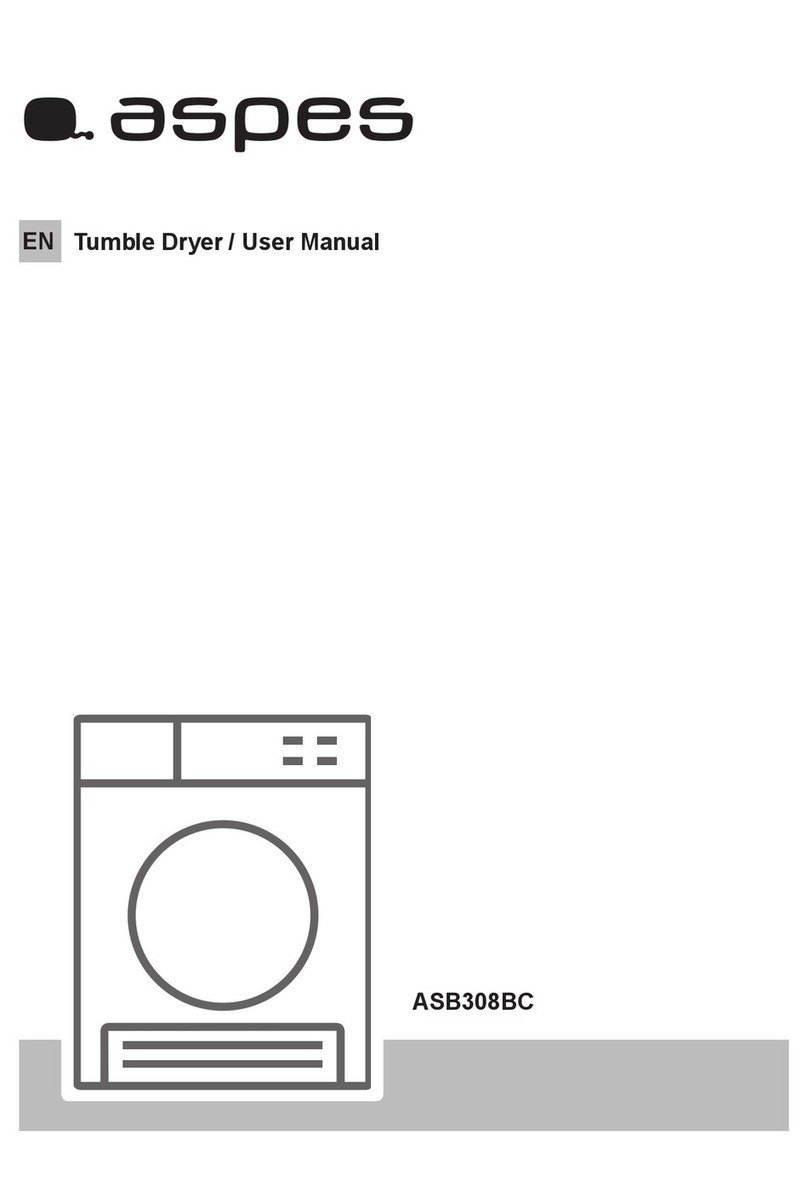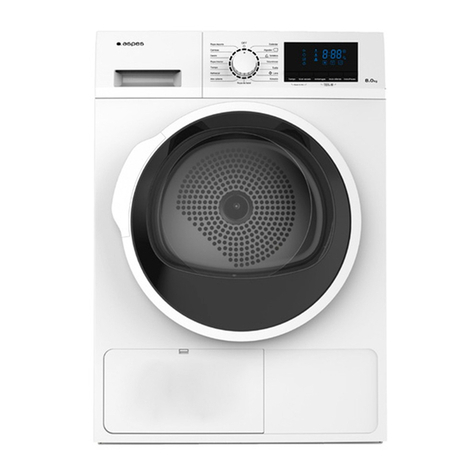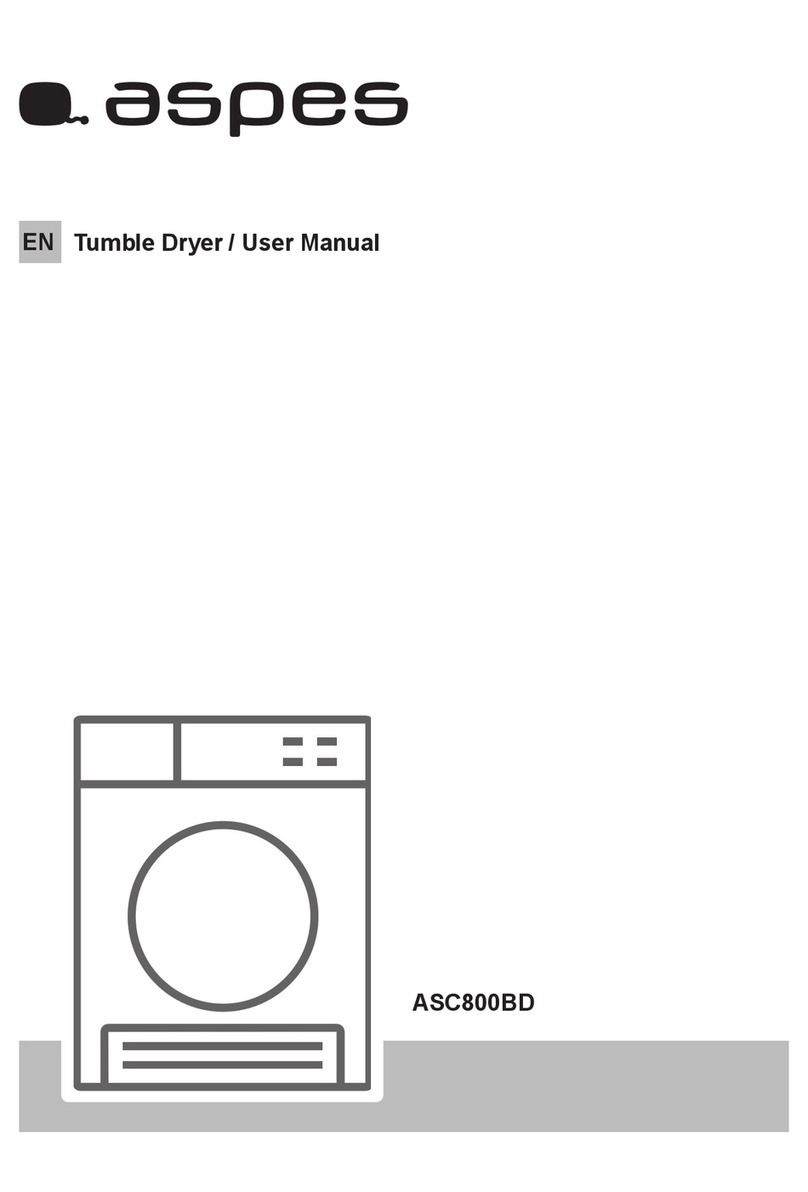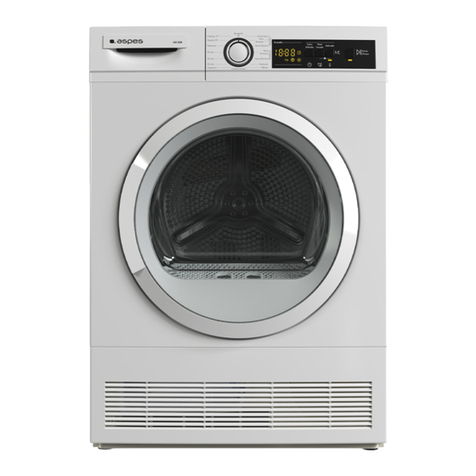Assicuratevi che la biancheria che state asciugando sia
adatta ad essere asciugata in un’asciugabiancheria. Un’in-
dicazione in merito la troverete sulle etichette della bian-
cheria. I seguenti simboli significano:
Mettere nell’apparecchio solo biancheria centrifugata.
Infatti, più la velocità di centrifuga della vostra lavatri-
ce è elevata, più il tempo di asciugatura sarà breve con
un conseguente risparmio di energia.
Il cestello di questa asciugabiancheria può contenere fino
a6kg di biancheria resistente (cotone, lino, biancheria in
spugna, tovaglie e lenzuola) o 3kg di biancheria delica-
ta (tessuti sintetici).
Tenere presente che per avere una buona asciugatura, il
peso di un carico composto da capi di biancheria di grandi
dimensioni (tovaglie, lenzuola, etc.) dovrà essere inferiore
a quello di un carico composto da capi di piccole dimen-
sioni.
Mettete i capi di piccole dimensioni in una federa asciutta:
l’asciugatura sarà più efficace.
Ricordate di chiudere tutte le chiusure lampo, di annodare
tutti i lacci e di abbottonare le federe.
Otterrete un’asciugatura più omogenea se eviterete di mi-
schiare capi di grandi dimensioni con dei capi di piccole di-
mensioni, anche se sono dello stesso tessuto. Cercate di
selezionare la biancheria in base alla dimensione, il tipo di
tessuto ed il grado di asciugatura desiderato.
Evitate di aggiungere dei capi umidi quando il programma
di asciugatura è già cominciato, altrimenti rischierete di ot-
tenere dei risultati non soddisfacenti.
ATTENZIONE
Evitate di introdurre nell’asciugabiancheria:
capi in pura lana (infeltriscono);
capi molto delicati come tende, collant e capi in seta;
capi in gomma o plastificati;
capi che sono stati in precedenza puliti con prodot-
ti infiammabili, ad es. prodotti per smacchiare.
verificare che non vi siano introdotti erroneamente
animali domestici o corpi estranei
Non mettete nell’asciugabiancheria biancheria troppo
bagnata.
4
CARICO DELLA BIANCHERIA
Introducete nell’asciugabiancheria solo biancheria cen
trifugata. Più la velocità di centrifuga della vostra lava-
trice è alta, più il tempo di asciugatura sarà breve. Non
è sufficiente strizzare la biancheria. Capi troppo bagna-
ti possono danneggiare l’apparecchio. L’asciugatura darà
risultati tanto migliori quanto più la velocità di centrifu-
ga sarà alta (800 giri al minuto o più). Una centrifuga a
500 giri/min. allungherà notevolmente i tempi di asciu-
gatura.
Centrifugate anche i capi di biancheria delicati. Evitate
di aggiungere capi umidi quando il programma di asciu-
gatura è già iniziato. Utilizzate sin dall’inizio la capacità
di carico massima: risparmierete così tempo ed energia.
Pulite il filtro dopo ogni ciclo di asciugatura.
Cercate, nei limiti del possibile, di non utilizzare degli
ammorbidenti durante il lavaggio, infatti l’asciugabian-
cheria rende già la biancheria soffice.
Asciugate i capi interamente sintetici preferibilmente al-
l’aria aperta: si asciugano più velocemente, non si cari-
cano di elettricità statica ed inoltre risparmierete ener-
gia elettrica.
I
VI RICORDIAMO CHE L’ASCIUGABIANCHERIA DEVE
ESSERE UTILIZZATAESCLUSIVAMENTE PER
ASCIUGARE BIANCHERIA LAVATA CON ACQUA.
Asciugatura
normale
Asciugatura
delicata
L’asciugatura
nella asciugabiancheria
non è permessa
RISPARMIO DI ENERGIA































